Westward into the Desert, divided hearts and hopes
On a week the world went insane, I was scheduled for a trip out West. The morning of my journey, I caught an early morning yoga class. After shavasana Ana, our instructor, reminded everyone that the studio was donating proceeds from the class to a peace organization. It seemed the least anyone could do after the attacks and counterattacks, eminent ground war, and a 75 year occupation of Gaza. The horror of history was upon us again, repeating itself anew, stirring deep feelings.
Ana is from Montenegro, one of the most beautiful parts of the Balkans.
"The most beautiful contact between the earth and sea took place at the Montenegrin littoral,” George Gordon Byron wrote about this place.
It was also a home to a civil war a quarter century ago, the beauty and hate, mixed together. Ana and I talked about our propensity to fight, about their civil war and the endless wars in the Middle East. My earliest political memories are of Jimmy Carter, Begin and Sadat at Camp David signing political agreements, making steps toward peace. The hostage Crisis followed. And by 1981, assassins' bullets ripped through Sedat. A dozen years later, Bill Clinton, Yasser Arafat and Rabin tried their hand at peace, with the 1993 Oslo Accords. And the same fate befell Yitzhak Rabin, in this case assassin’s bullets from Israeli fundamentalists in 1995. War and backsliding followed the failed peace.
I moved to New York a few years later, watching, the 911 blowback firsthand, war after war, US govt bankrolling another invasion, traumatized people traumatizing other traumatized people, the pattern repeating itself anew, 1000 dead in Istrael, 2000 dead in Gaza. Fears of violence and more terrorism.
It was hard to sleep.
“No man is an island,” wrote John Donne. “any man's death diminishes me, because I am involved in mankind. And therefore never send to know for whom the bell tolls; it tolls for thee.”
In this case, there was a lot of diminishing.
Everyone was trying to make sense of the new reality, the violence whirling through history. I can’t stop thinking of the Warsaw Ghetto, where we visited a year ago, the impulse to fight back against enclosures. Everyone had to, even if they knew they’d be killed doing so.
On I fly across the country to see the college kid, studying out west.
By four PM, we met at a sunny park bench at Windward and the Venice Beach boardwalk. And the conversation begins. I pull out some books and zines from Village Works, talking about Wombat, the NYC graffiti artist, inspired Sascha’s old band Choking Victim. In between the cavalcade, we stroll looking at the characters, the cyclists and skate boarders doing tricks, artists selling their wares, nudists and dog walkers, guys pumping iron, and countless others smoking pot, magicians and tarrot card readers, talking about the history of absurdism, new chapters of the history of the movement. Free spirits everywhere, many cavorting, others trying to get away from old worlds and wounds. Homeless people are digging through the trash, talking to themselves, a woman screaming, a taco vender giving away food, trying to find a common humanity among all of us. The sun goes down and darker energy takes Venice Beach. Its like an abandoned carnival, says the teenager. After some Sushi, we make our way back to campus, watching Cabaret in the TV room with a motley crew of students, enjoying their Friday night.
People are watching an eclipse the next morning over breakfast on the patio outside, everyone sharing glasses, comparing notes. There’s a good Southern California vibe, diverse. People seem kind.
On the way out to the desert, we join Sascha, our old friend from New York, chatting about kids, journal writing and books for trauma class, among adventues, between childhood and growing up.
Somewhere along the line, we become parents, with our own kids and partners.
We hope to avoid the same mistakes our parents made, yet, they repeat themselves. I inevitably do things my dad did, struggling with myself and others. And the pattern renews itself.
On we drive through downtown LA, turning off to make our way to Descontrol punk shop, on 1725 E 7th St. In between manikins and zines, t shirts and posters, its proprietor sits smoking a huge splif, chatting about punk bands, showing us his collection of ephemera. I dig through a pile of old posters for shows.
“These guys are from Chile,” he tells me, lighting up.
“What are smoking?” i ask.
He smiles, puffing away.
“Pots just part of the culture here,” the college kid tells me, driving along.
We spend the rest of the afternoon making our way out of the city, on highway ten, past East LA, my old haunts in Claremont, along the San Andreas fault line, the final stretch, along the Yucca Valley 62, a state highway that cuts across the Little San Bernardino Mountains in Riverside and San Bernardino counties, past thrift stores, and junk shops, into the high desert.
The sun setting, we stop at a few thrift stores, looking for treasures among the junk.
And wind our way into the hills, to the desert for an art installation at Shadow Ranch, Joshua Tree CA:
“Immersive Multi Media Installations · PopUp Anarcho-Cinema Theater
Eclectic Experimental Visual and Musical Performances
MUSICAL PERFORMANCES at The Engine Theater
GasLamp Killer · Jesika Von Rabbit ·
Spindrift · DPSD · Chromadepth
stay tuned for more to be announced
FILM SCREENINGS at The Department of Anarchy PopUp Movie Theater
Featuring Short Cinema Assaults curated by Burke Roberts and Noel Lawrence
running from dark til dawn
MULTIMEDIA INSTALLATIONS brought to you by Digital Debris Gallery
Experiments in landscape Projection Mapping / AI / Light and Shadow /16mm / Hologram Orb Tree"
Images reflect on the ancient stones, film projections, light installations, dancing into the evening, shaking against the crevices of the rocks, modern stories on ancient foundations, lives and ideas whirling in a strange surrealist landscape. There is an otherness here that feels odd, out of this world, this time. Trippers stroll between the exhibits, sharing food, taking in the colors, dancing, looking out, greeting each other. Sammy shares a meal with us, chatting over a beer and dinner on the kerosene stove.
Joshua Tree has two lives, the hot day, and the dark cold evening, where we are reminded of something beyond our life and history and world, to be a part of the land, to learn from its flowers and cactai, its Mojave yucca, few more than seven feet tall, Joshua Trees, and Cholla cactus, with their yellow spines, tightly clustered stems, each co esting with an ecosystem that has been functioning, co-existing together for eons.
We've gotta be good conductors of nature, says the hotel proprietor at the 9 Palms Inn, the next morning. He's been here fifty years. Most of our bodies are made of water. It's a conductor of energy. We can do the same. We can learn a lot from the desert, its colors and patterns.
We walk through the Cholla Cactus Garden.
A sign explains:
“We humans often find value in things when we see profits for ourselves. We fail to recognize a value of a thing to itself or to other living things. The Cholla Cactis is just such an outlier.” Walking, we meditate on this delicate ecology between the cactus and the desert, the cactus and the world.
After a few hours, we head to the Southeast Exit and make our way to
Bombay beach, an empty, urban landscape and polluted beach with squats, art, a waterfront that smells of dead fish, fish bones underfoot, a desolate empty space. "Irrigation drained into the lake, brining salt and pesticides with it causing wildlife to die and toxic algae to bloom, polluting the lake even more" says one observer. “The Salton Sea coast used to be a tourist destination,” says Sammy, who joins us. “Botulism killed fish and birds.” No birds fly above. No fish, just a few buildings and art installations, images, forshadowings of an apocalyptic future. "At 223 feet below sea level, it's the lowest community in the United States. Although about 200 people live here, the place has the aura of a ghost town, a shell of its glory days as a resort destination..."
"It was doomed from its formation" says my old buddy Mike. "The real tragedy is the Colorado never reaches the gulf in Baja where the fish and birds ought to be."
Just a few miles away is Slab City. Paved roads end as we make our way this “off the grid” community in the Salton Trough area of the Sonoran Desert, in Imperial County, California, some 45 miles north of the border. Its built on the remnants of concrete, pieces left behind from a decommissioned, mostly forgotten WWII military base, the old Camp Dunlap. Once there, we stop at Salvation Mountain and East Jesus, “an Eco-themed, desert-set art project with a sculpture garden of pieces made from junk & waste” off E Jesus Rd, Niland, CA. Salvation Mountain was “Leonard Knight's 28-year passion project… Mud Straw and an estimated 100,000 gallons of paint hold the mountain together. “It needs constant maintenance,” … At one point in time, it was considered a toxic hazard, but that was forgotten in 2002 when the mountain was designated as a Congressional National Folk-Art National Treasure.” We walk among the art installations, including an image of the Kabbleistic tree of life, with its many branches illustratring an ever evolving interaction between God and our finite universe. “Our lady of lost souls and freaks,” another installation. Jenny Holtzer messages are drawn on a display of TV sets, among other found objections, cars, trucks, etc, crumbling back into the desert, a forshadowing of what may become of us.
For decades, Slab City has been home to drifters,a few dreamers, such as Chris in Into the Wild, a book by Jon Krakauer. For Chris, its a long stop, a sort of practice run before he hopes to live off the grid Alaska, a place be in and of everything, the land, the trees, the water, and nature itself.
Known as 'The Last Free Place in America” — this funky city is home to people who have essentially stepped out of our world, our culture. The outer world is left behind here. No water, no energy, just people and their ideas. The inequality is still here. But people have left something to create something entirely different here.
We feel a draw a draw to stay, to learn from the pace of it all.
“We should just keep moving to Mexico,” says the teenager.
I felt it.
We felt it.
Finaly, the road called, drawing us a few hours back to LAX, with a stop for at Inn and Out on our way.
Flying home, the teenager in Brooklyn ran into our old friend Monica, performing with her brass band, trying to navigate the complicated feelings accompanying her journey back to New York from Palestine. Later in the night, Hunken posted a message:
“Watching the last week unfold has been a complete nightmare and my heart is broken, holding space for the grief of my Palestinian friends, and my Jewish and Israeli friends, those who are being shamed for daring to empathize with another group of oppressed people, holding grief for the murder of countless innocent people. I was in Palestine just three weeks ago creating a play with young Palestinian women at the Freedom Theater’s Feminist Festival. While there we experienced an unprovoked invasion by Israeli forces and we were very close to losing our own lives while huddled in a dark theater with children watching a play. Living under occupation is a hell no one should have to endure, no one. Palestinian people have lived through 75 years of it. And just as Western capitalist interest has done before, they manipulate our grief as a cry for war, to maintain power and influence. They have hoodwinked us to look past our own humanity and those of others. But we have to stand up and demand an end to this mass killing. Please call your reps in Congress. Please demand a ceasefire . The international community must speak out! That means you!!
Posted @withregram • @shaunking BREAKING: The United Nations now calls what Israel is doing to Palestinians as “ethnic cleansing.”
As I write this activists are out in the streets:
“American Jews Say: Ceasefire Now!
Stop Genocide Against Palestinians
Monday, October 16, 2023 12:00 PM - 6:00 PM ET
Farragut Square, Washington, DC
RSVP below to join us at the White House on Monday, October 16 to mourn for the dead, and fight for the living–both Israelis and Palestinians.
This is a Jewish-led action, sponsored by IfNotNow and Jewish Voice for Peace. We welcome and encourage our non-Jewish allies to join us.
“No electricity, no food, no water, no fuel. Everything is closed. We are fighting human animals, and we act accordingly.” This promise, from Israeli Defense Minister Yoav Gallant, is a direct call for mass killing and forced removal of hundreds of thousands of Palestinians from their homes.
The Israeli military is preparing for a massive ground invasion of Gaza. Israeli and American leaders are dehumanizing Palestinians with vitriolic rhetoric that calls to mind the most hysterical days of Bush's War on Terror. We know where this will lead: genocide.
President Biden and every American political leader must demand a ceasefire now.
Many of us are mourning our Israeli and Palestinian friends and loved ones. We are in pain and grief, trying to process a week of horrific violence that has left so many that we know injured, traumatized, kidnapped, or killed. But we refuse to let our grief be weaponized to justify the murder of more Palestinians. As American Jews, we demand a ceasefire now.
No genocide in our name.
The time is now to mobilize to prevent this genocide from going forward. We demand that President Biden use his leverage to implement a ceasefire and use any possible tool to force Israel to halt its war on Palestinians in Gaza.”






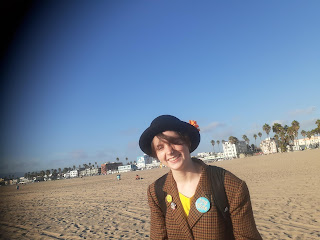
























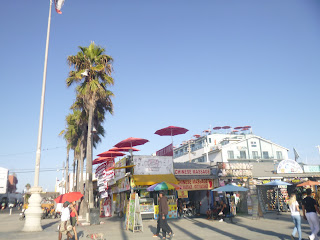














































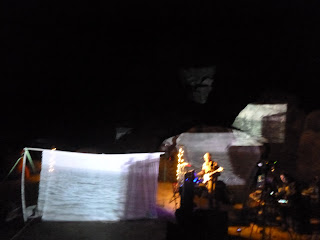



































































































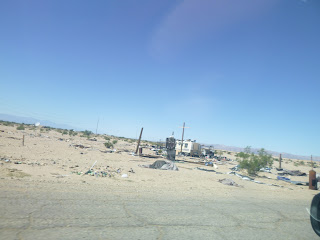
























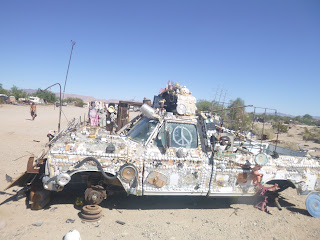







































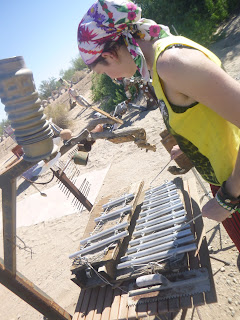





























































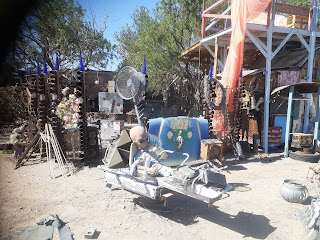







No comments:
Post a Comment